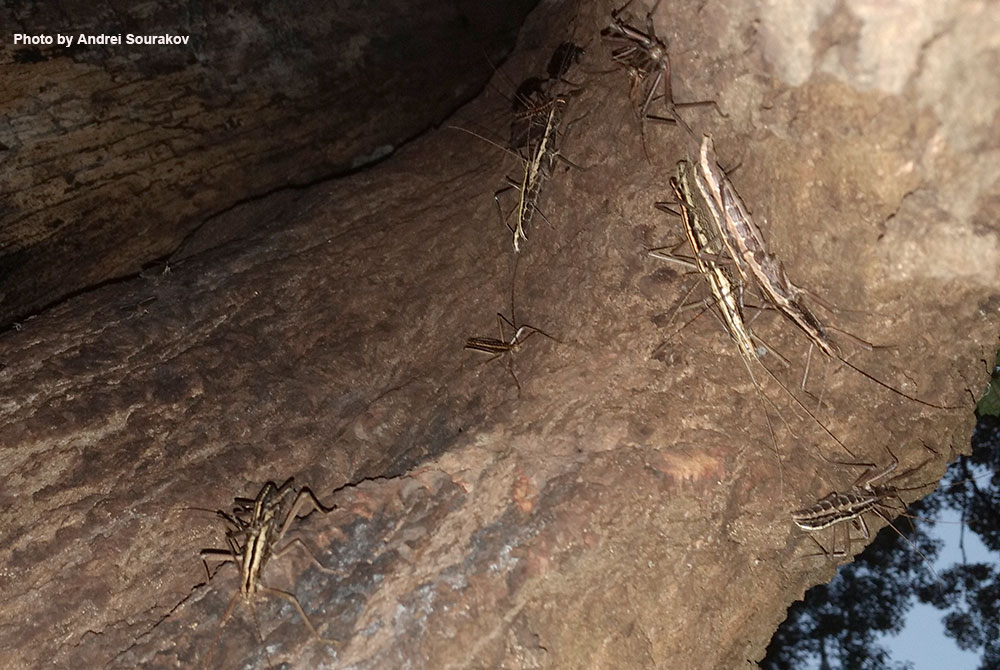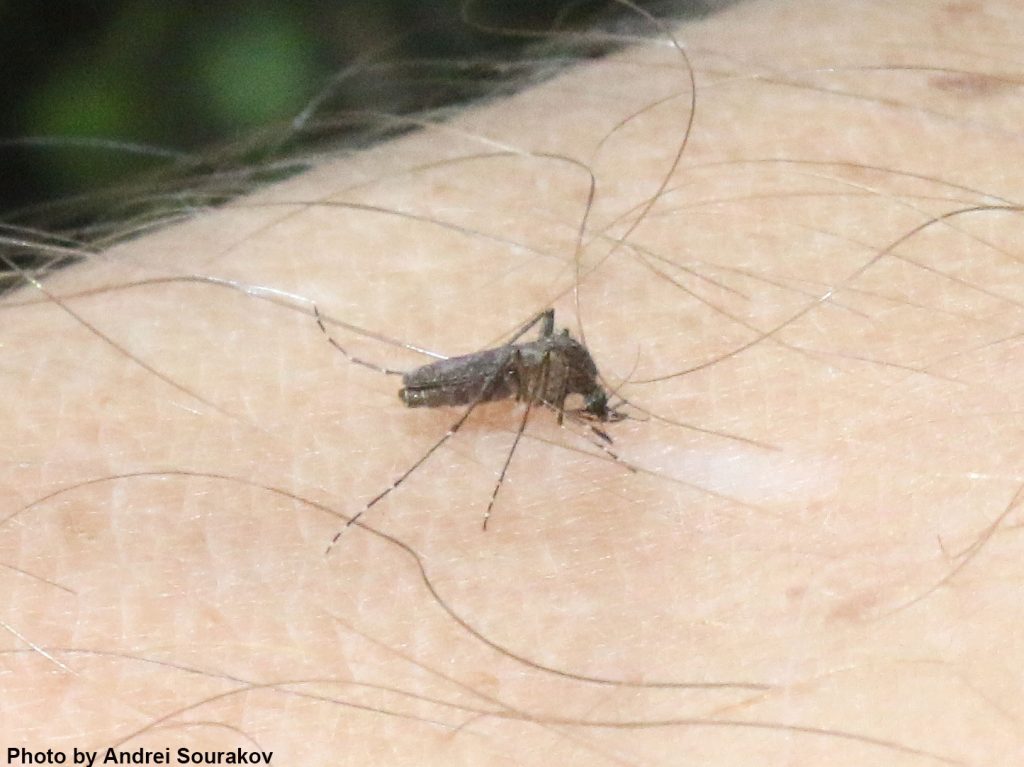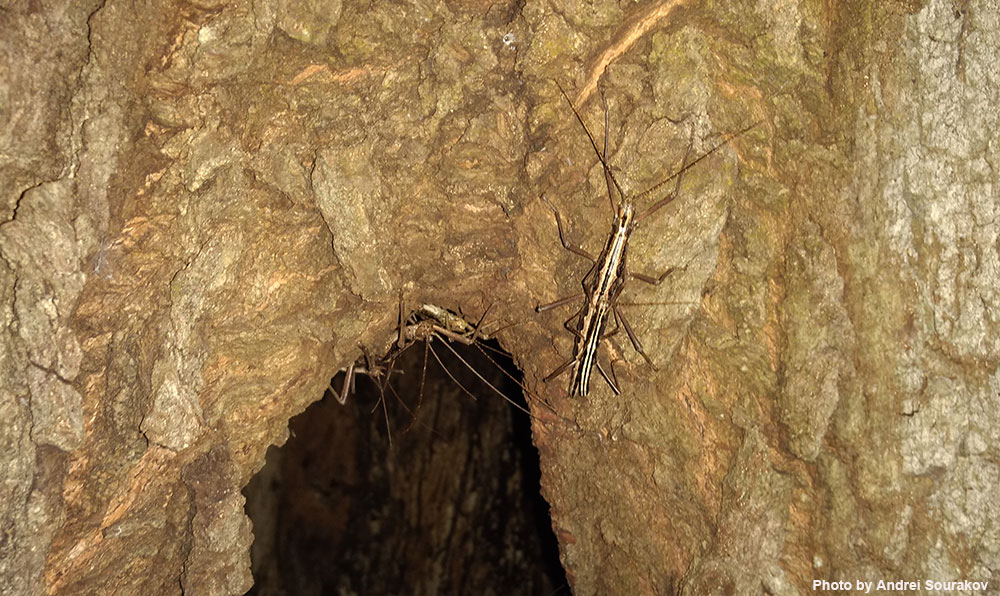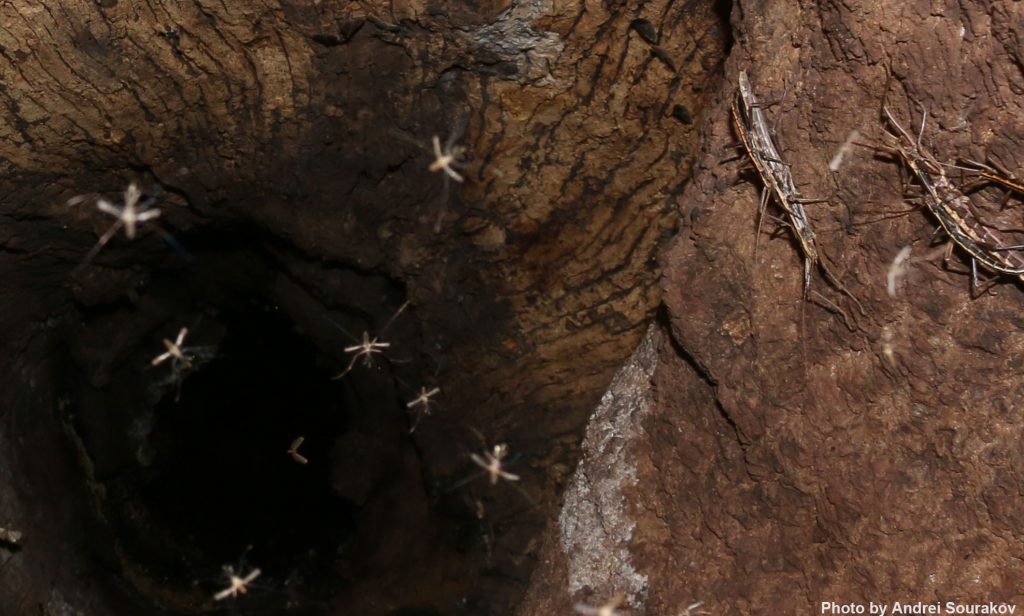I’ve been called eccentric for sticking my hand blindly into tree holes while taking photos of the moths inside. My colleague, Lary Reeves, who studies mosquitoes, goes even further: if he can fit inside the tree, he climbs in head first and looks for mosquitoes while standing inside the tree’s ‘belly.’ Last time I tried something like this, I was chewed up by the chiggers pretty badly, but this does not faze Lary.
We recently ventured to the southern red oak in San Felasco that was featured in a previous Florida Museum Science Story. That is where I found over 400 Idia moths a couple of years ago, roosting by day. While mosquitoes were not my primary interest, I certainly could not avoid noticing them then and upon my subsequent returns to the tree.
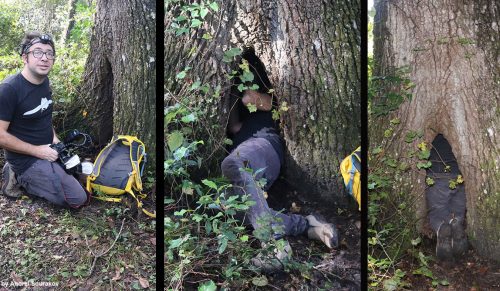
Lary and I found at least three species of mosquitoes (Mansonia titillans; Aedes infirmatus; and Anopheles quadrimaculatus (aka Common Malaria Mosquito)), this time around. We also, as expected, found numerous glossy black Idia moths and many of the infamous twostriped walkingsticks mating. This time, I did not get sprayed in the eye by one of them – an experience I am trying to avoid since it happened to me last year, when I had to paddle my bike in agonizing pain to a bike-washing station for an eyewash.
Also, Lary and I recently talked to the ‘In Defense of Plants’ podcast about this little-appreciated ecosystem and its importance for the life of the forest. I hope you enjoy this conversation and the photos of our outing.

